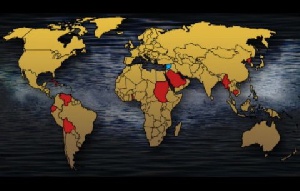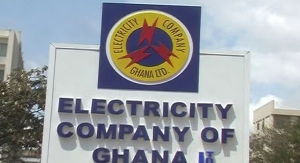Sitting in the office at his home in Washington, 67-year-old graduate student Patrick Brown spends hours searching for boats and buildings on a satellite photograph as part of an online project to combat child slavery in Ghana's vast Lake Volta.
Brown is one of thousands of volunteer "mappers" around the world laying down digital markers in an attempt to establish the extent of child trafficking in the fishing industry across one of the world's biggest man-made lakes.
Crowdsourcing project Tomnod is working with the public-private partnership The Global Fund to End Slavery to produce accurate and public data – which could be used by activists, campaigners and the government to clamp down on trafficking.
"Child slavery is an abomination to mankind, and I will do anything I can to expose the scum that practise it," said Brown, who spends his time tagging a map of the lake when not working towards his online communications and leadership degree.
More than 20,000 children are forced into slavery on Lake Volta in Ghana, the International Labour Organization estimates.
They work 19-hour days and carry out dangerous tasks which leave many disabled, disfigured or even dead, campaigners say.
Yet the size of the lake, 8,500 square kilometres, makes it difficult to map from the ground and provide an exact figure of the number of child slaves, said Caitlyn Milton at Tomnod, part of the satellite company DigitalGlobe.
"Using high-resolution satellite imagery, we can engage a global community of online volunteers to pore over the imagery pixel by pixel," Milton told the Thomson Reuters Foundation.
More than 10,000 volunteers have contributed to the campaign since it launched two weeks ago, identifying almost 150,000 buildings, boats and fish cages and mapping half the lake.
Parental hopes are dashed
Although child labour is illegal in Ghana, thousands of children are sent away by parents who believe traffickers' promises of an education and a better life.
In reality, children as young as four years old risk their lives diving into the lake's murky waters to untangle nets, and end up working in such horrendous conditions that many die.
For other parents, selling some of their children into slavery is the only way to feed the rest of their family.
The average couple in the Lake Volta region earns little over $2,000 (R27,373) a year, meaning that a family with eight children will have only $2 a week – the price of a loaf of bread – to feed each child, according to The Global Fund to End Slavery.
The Tomnod project could prove revolutionary in combating modern slavery if organisations in the region work together and share data, the fund's CEO Jean Baderschneider said.
"We hope a network of NGOs working together will galvanise around the data," she told the Thomson Reuters Foundation.
Tackling trafficking on the lake is hindered more by limited resources than a lack of data, said James Kofi Annan, who escaped slavery at 13 and set up the charity Challenging Heights to rescue children and prevent others from being enslaved.
"Unfortunately you don't have to look hard to find children working on the lake, but it takes a lot to mount rescue operations that are backed up by the long-term support necessary to ensure children are not retrafficked," Annan said.
Yet hard data could increase the government's efforts to end slavery, by prosecuting traffickers and providing social support so that there is somewhere for children to escape to, he added.
Tomnod has run other projects including monitoring illegal fishing in Costa Rica and locating elephant poachers in the Democratic Republic of Congo, and is currently documenting the damage caused by Hurricane Patricia after it struck Mexico's Pacific coast on Saturday.
Diaspora News of Thursday, 29 October 2015
Source: Reuters

















